Exploring the Mysteries of Uranus: The Gas Giant's Hidden Depths
Written on
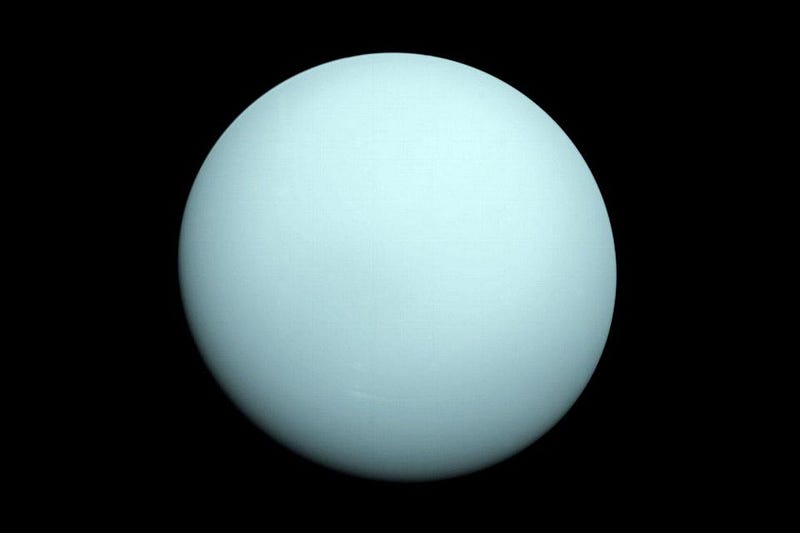
Why does Uranus stand out as the only planet seemingly devoid of intriguing features? While other planets boast craters, ice caps, and complex atmospheric structures, Uranus appears remarkably plain.
In our Solar System, each of the eight major planets showcases distinct characteristics. The terrestrial planets are adorned with craters, ridges, and mountains—remnants of tumultuous histories. Most planets, save Mercury, possess atmospheres filled with volatile substances that create clouds and hazes. Gas giants like Jupiter, Saturn, and Neptune exhibit stunning atmospheric transformations when observed in detail.
Yet, Uranus remains an anomaly. This pale blue orb is the only planet that lacks notable features. When Voyager 2 made its historic flyby in 1986, the most striking revelation was how unremarkable Uranus looked. To observers, it seemed devoid of any captivating characteristics. Here’s the scientific explanation behind this perception.
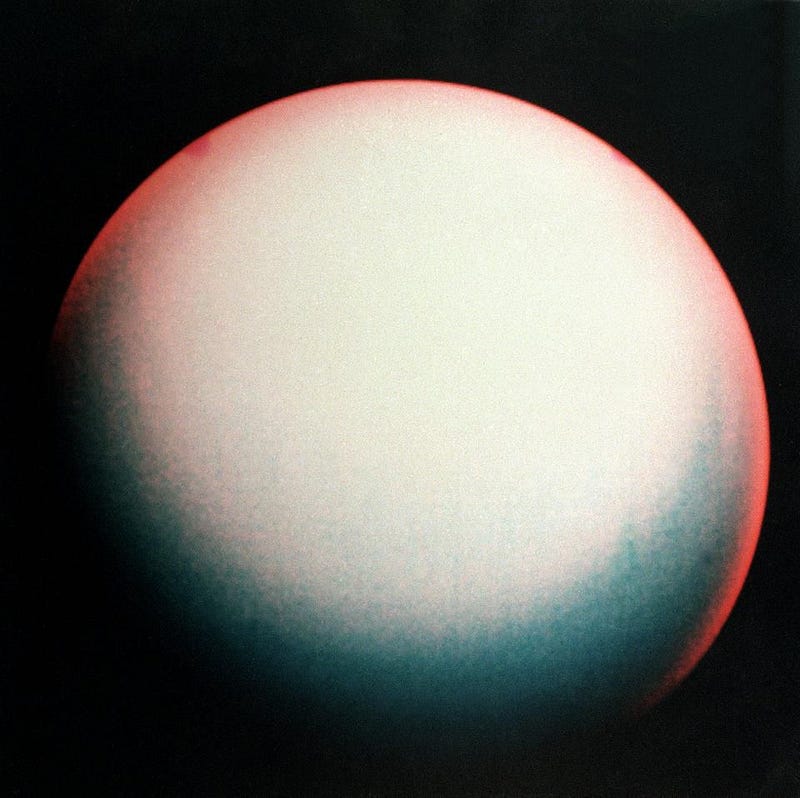
When viewed from Earth, Uranus appears as a small turquoise dot. Voyager 2, renowned for uncovering the rich details of Jupiter and Saturn, encountered a large, smooth, turquoise sphere when it reached Uranus. Despite increasing image contrast, little was discernible. Uranus was, to many, the most underwhelming planet imaginable.
Initially, scientists believed they understood the reasons behind its plain appearance. Given its smaller size compared to Saturn and Jupiter, it was assumed that Uranus lacked sufficient internal heat generation, existing solely at a temperature dictated by solar heating. This led to the conclusion that its chilliness and lack of features were due to its distance from the Sun, with an upper atmosphere consistently at 58 K.
However, this perception was misleading. While Uranus is indeed cold, distant, and possesses minimal internal heat, it is unique in its rotational characteristics. Unlike the other planets that tilt at various angles relative to the Sun's rotational plane, Uranus rotates almost on its side, akin to a barrel rolling.
During Voyager 2's 1986 flyby, it was solstice, illuminating one of Uranus' polar regions. Over time, Uranus transitioned from solstice to equinox, shifting sunlight from one hemisphere to the equator. This transition created rapid changes in day and night, synchronized with Uranus' rotation period of about 17 hours.
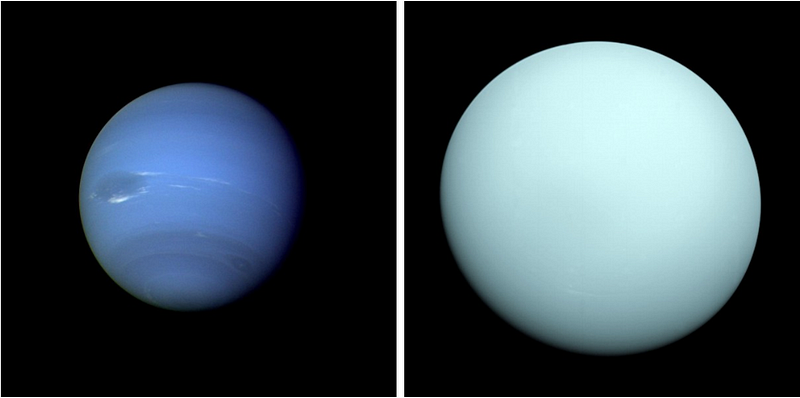
Uranus requires 84 Earth-years to complete one orbit around the Sun, meaning it takes 21 years to transition from solstice to equinox. With Voyager 2's visit occurring during solstice in 1986, the next prime observation opportunity arose in 2007 at equinox. Although no mission was in place, the Hubble Space Telescope was ready.
Hubble's observations unveiled the dynamic features that had long been anticipated, including swirling clouds, storms, and distinct atmospheric bands. The once monochromatic world was now revealed to be an active, feature-rich planet.
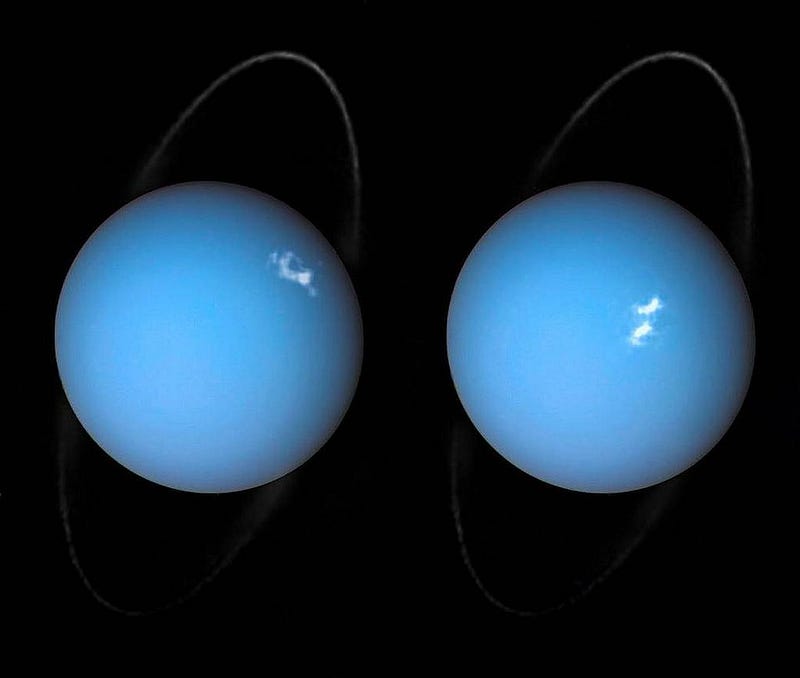
The uniform color observed during solstice arises from the temperature-induced methane haze, which absorbs red light, imparting a turquoise hue to reflected sunlight. This haze obscures the clouds beneath, contributing to the featureless appearance we associate with Uranus since the Voyager 2 encounter.
With an axial tilt of 97.7°, Uranus at solstice indeed appears dull. However, this methane haze represents only the uppermost layer of its atmosphere. Investigations in different light wavelengths have revealed more of its complex characteristics.
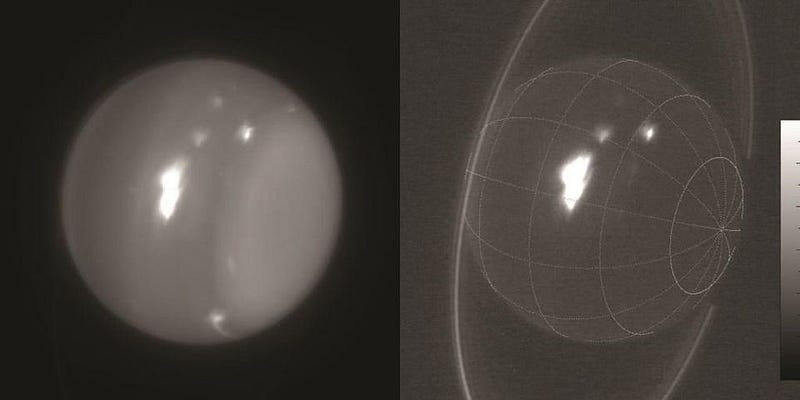
During equinox, the upper atmosphere cools at night, allowing the methane haze to mix with lower layers. When daylight returns, the upper atmosphere becomes partially transparent, revealing changes that offer insights into the 99% of the atmosphere that lies beneath.
Notably, there are storms observable in the Voyager 2 data that can only be seen through extensive image stacking, uncovering variations between frames.

Astronomer Erich Karkoschka, who investigated these features in 2014, remarked:
> "Some of these features probably are convective clouds caused by updraft and condensation. Some of the brighter features look like clouds that extend over hundreds of kilometers. [...] The unusual rotation of high southern latitudes of Uranus is probably due to an unusual feature in the interior of Uranus."
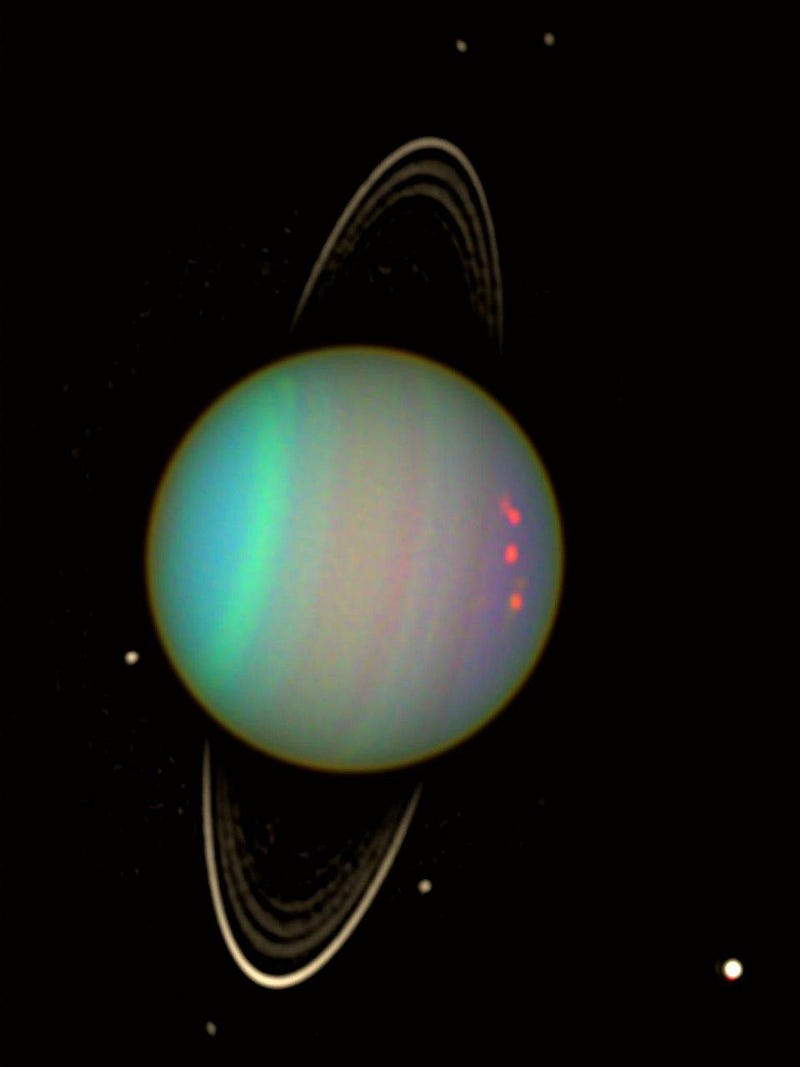
By analyzing light in wavelengths beyond human perception, such as infrared, scientists have been able to create enhanced-color images. Near equinox, these images reveal a multitude of features that remain invisible to the naked eye, including:
- Atmospheric bands,
- Hemispheric differences between the sunlit and dark poles,
- Storms and clouds in the upper atmosphere,
- A faint ring system likely formed from disintegrated moons.
Moreover, storms visible only in infrared intensify and fade, dispelling the notion that Uranus is featureless; it is merely a matter of observation methods.
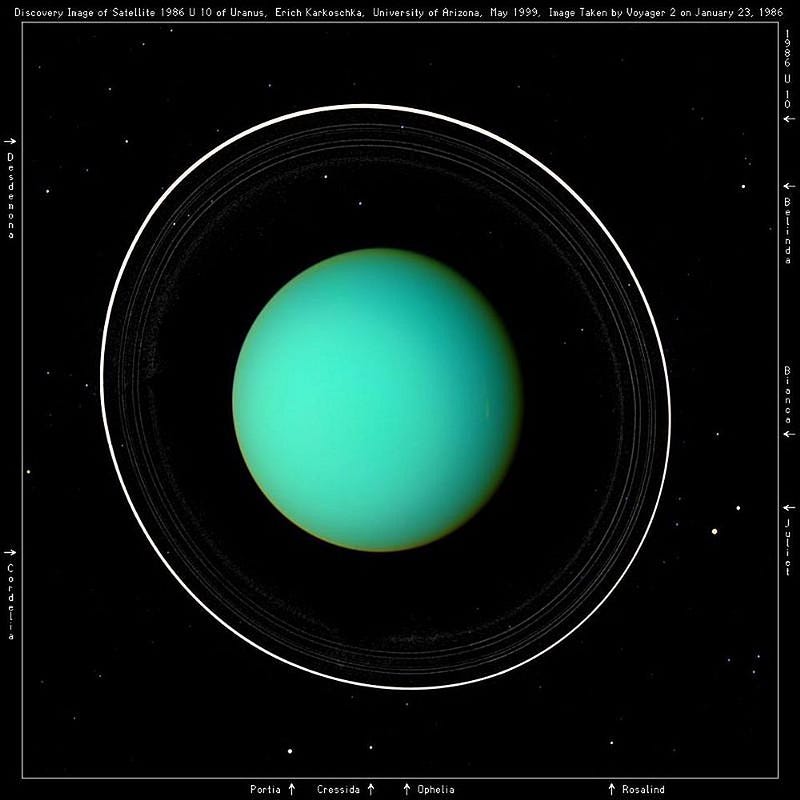
Despite its long-known color, the Voyager 2 mission provided our first close-up view of Uranus, discovered in 1781. Now, 33 years have passed since then without a return mission. The planet no longer resembles its earlier state as it has moved beyond solstice.
Many mysteries still envelop Uranus, the second-most-distant planet from the Sun. Its oddly tilted yet powerful magnetic field—about 50 times stronger than Earth's—rotates in a corkscrew motion around the planet. The presence of carbon and hydrogen hints at diamond rain in its lower atmosphere due to immense pressure. While Uranus maintains a uniform temperature during solstice, it experiences significant temperature variations during equinox, suggesting an underlying cause for the lag between temperature shifts and seasons. The storms observed are indicative of deeper atmospheric vortices.

To many, Uranus remains the most unremarkable planet, and that might hold true—albeit conditionally. At solstice, it truly appears as the most bland, featureless entity among the eight planets. However, its lack of internal heat, combined with its unique axial tilt, provides a rare chance to study how a gas giant operates when its energy balance is influenced by solar radiation.
Uranus, once perceived as dull, reveals a remarkable diversity and complexity. This turquoise planet is shrouded in mysteries that suggest intricate internal structures beneath its seemingly uniform exterior. As long as there are energy discrepancies between its hemispheres or between day and night, fascinating phenomena are sure to emerge. The case for a dedicated mission to Uranus has never been more compelling.